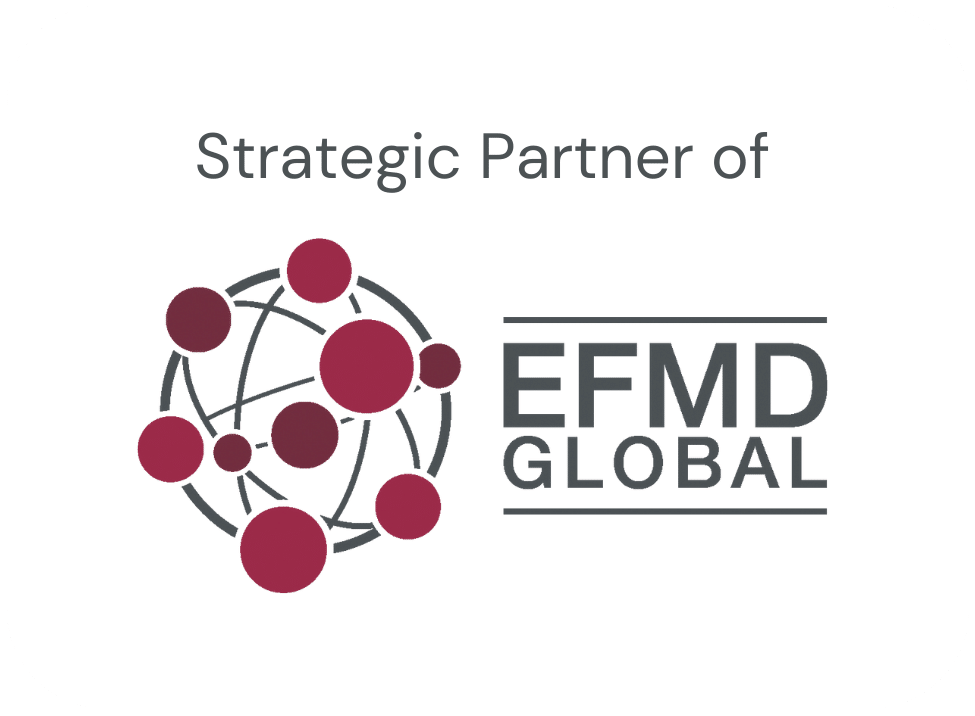Dr. Amber Wigmore Alvarez, Chief Innovation Officer at Highered, shares her insights on international hiring
Talent intelligence has recently emerged from the “Business School Hiring Report: Corporate Recruiters Survey 2019” that will prove to be game changing for recruiters, business schools and talent alike, who choose to take heed. The Survey is a product of the Graduate Management Admission Council (GMAC), and was conducted in partnership with Highered EFMD Shared Career Services, the EFMD, and the MBA Career Services & Employer Alliance, during the months of February and March 2019, in association with the Career Services offices at 116 graduate business schools worldwide.
The analysis from the Corporate Recruiters Survey is based on responses from 1,202 employers in 45 countries worldwide who collaborate directly with the participating schools for talent sourcing purposes.
This analysis of the Corporate Recruiters Survey has its focus on geographical phenomena, and should be used responsibly by academic institutions and employers alike, in order to responsibly guide and orient the aspiring talent.
International Hiring
The most alarming intelligence to emerge from the Corporate Recruiters Survey is the continuous drop in hiring of international candidates in the US. This figure stands at 40 percent hired in 2018, down from 45 percent in 2017 and 51 percent in 2016.
US companies’ international hiring plans stand at 48 percent of US employers, which is similar to 2018 (47%), yet down from 55 percent in 2017. For 2018, this equates to 7 percent less of international hires than were planned for and 10 percent less between international hiring planned and actually hired in 2017.
This trend is potentially devastating for the more than 1,000,000 international university students studying in the US (IIE, Project Atlas, 2016 & 2017).
As to be expected, the hiring of international talent transferred to other regions, such as Asia-Pacific (69%) and Europe (71%) – where we see an increase in international hiring, both up from recent years; Asia-Pacific up from 58 percent in 2018 and 67 percent in 2017, and Europe up from 65 percent in 2018 and 64 percent in 2017.
Among US employers, those in the tech sector are the most likely to have international hiring plans in 2019 (33%).
The decrease we are seeing amongst US employers can be attributed in 25 percent to uncertainty about future changes in policy/law, versus European (15%) and Asia-Pacific (11%) companies, that were less inclined to cite this as a factor for not hiring international talent.
Target Profiles
If we focus on US employers’ plans to hire MBA talent versus other parts of the world, this has slowed to 77 percent, down for the second consecutive year. However, this figure represents 87 percent of companies in Asia-Pacific (slightly down from last year’s 90%) and 69 percent of European companies, up from 2018 projections (64%).
The program of choice from which to source talent outside of the US is the Master in Management (MiM), reflecting 69 percent of Asia-Pacific companies and 67 percent of European companies. An increasing familiarity with and recognition of the MiM in these regions, coupled with the ability to hire talent in greater numbers due to more cost-effective starting salaries, are likely determinants of these findings. Among employers in the US, the MiM is at a stark 33 percent hiring rate.
With regards to other specialized master programs, the Master of Accounting hiring outlook has increased among Asia-Pacific companies (50%) and maintained itself well among European companies (43%). Hiring projections for this talent in the US is considerably down in 2019 to 32 percent.
The Master of Finance proves strong for projected hiring in Europe (54%) and Asia-Pacific (58%), versus the 31 percent of US employers that plan to hire such graduates.
As for the Master of Data Analytics talent, hiring projections are again on the rise in Europe (66%) and Asia-Pacific (69%), whereas this figure has moderated in the US to 48 percent.
As for profiles originating from other specialized business master’s programs, overall, 64 percent of companies plan to hire recent graduates from these talent pools. International talent considering enrolling in such programs in the US should take note that European and Asia-Pacific employers are putting more value on such programs, versus their US counterparts. It is 1 in 3 Asia-Pacific companies that target talent from Marketing, Economics, Engineering Management and Supply Chain Management programs. A similar proportion of European companies target profiles from Economics, Engineering Management and IT programs. In general, US companies are less inclined to target graduates from other specialized business master’s programs. In this case, it is IT profiles that they target the most (26%).
Job Functions
In Asia-Pacific (53%) and Europe (51%), Consulting is the most common role for fresh MBA graduates, while Strategy/Innovation (44%) and Finance (44%) tie for the most common in the US.
As for MiM profiles, Marketing (60%) takes the lead in job function placement in Asia-Pacific, versus Consulting (53%) in Europe and Project Management (38%) and General Management (38%), which tie for the lead in the US.
Internships
What is clear is that for MBA candidates, an internship may be a stepping stone along their career path. This is especially the case in the US, where 58 percent of companies plan to have MBA interns in 2019, versus 39 percent of Asia-Pacific and European companies.
Interns from other specialized business master’s programs are proving to be more common among European companies (57%), versus US (23%) or Asia-Pacific (34%) companies.
Compensation
As for starting base salaries, most European employers plan to maintain salaries at 2018 levels, while Asia-Pacific companies plan to make increases. Most employers plan to increase MBA and Master of Data Analytics salaries at or above the rate of inflation this year. By region, record median starting salaries (adjusted for inflation) were reported for MBA talent at US companies in 2019 (US$115,000). European companies offer a starting new MBA hire median salary of US$95,000, while Asia-Pacific companies offer a median of US$45,000.
On a global scale, the majority of employers (56%) plan to increase MBA starting salaries in 2019. This figure includes 63% of Asia-Pacific employers, 56% of US employers and 49% of European employers.
Signing bonuses continue to be more popular in the US, offered by 58 percent of employers, versus Europe (33%) and Asia-Pacific (31%). The median signing bonus among companies that offer them were comparable between Europe (US$10,000) and the US (US$10,500). There were too few respondents in Asia-Pacific to analyze the median amount.
Benefits that companies offer to new hires vary by region, with the US leading Asia-Pacific and Europe in all categories, with the exception of childcare vouchers, which is strongest in Europe. More specifically, where US companies stand out the most is in health benefits and retirement plans, with a significant offering in each category, 93 percent and 90 percent respectively.
Education Assistance is more commonly offered by US companies (49%), versus Asia-Pacific (36%) and Europe (30%). The majority of companies in Europe, Asia-Pacific and the US are maintaining their Education Assistance budget, with the exception of 5 percent of US companies that have decreased their budget.
Company sponsorship of MBA, EMBA and business master’s programs are most common among US employers (40% in the case of MBAs), versus Europe (14%) and Asia-Pacific (11%).
Conclusion
How do these key findings resonate with the more than 4.1 million international students studying abroad (UNESCO, 2019)?
While the Corporate Recruiters Survey is widely used by HR professionals and the Career Services departments of business schools, it is equally important for the aspiring talent to familiarize themselves with the trends as they devise their career strategy. For international students studying in the US, this means ensuring that the Career Services of your business school has a significant critical mass of global opportunities in the target geography.
In order to set expectations straight, one should take into account that recruiting is largely based on geographical proximity, yet stringent work authorization requirements in certain markets only exacerbate the situation for international candidates. Thus, it is important that the Admissions departments of academic institutions are responsibly orienting candidates toward the appropriate programs, not only in accordance with fit with program, but also in line with their professional goals upon successful completion.
The longer-term growth trend is toward 8 million internationally mobile students by 2025 (Organisation for Economic Co-operation and Development (OECD), 2017).The key stakeholders – recruiters, talent and academic institutions – must leverage the power of alliances to gain strength, momentum and visibility for the issues affecting global placement. It is vital to have the right data in order to make data-driven decisions, as well as understand which countries are facing difficulty hiring and how talent shortages are growing around the world, at a global average of 45 percent (ManpowerGroup Employment Outlook Survey Q3, 2018). A continuous, strategic dialogue is the only way to forge a path that will allow employers to tap into global pools of candidates who have been educated and positioned for placement in line with their aspirations, motivations and values.
Highered is the strategic partner of EFMD, providing shared career services to over 600 schools globally to complement campus career service initiatives. To learn more about Highered, reach out to info@highered.global or visit us at https://efmdglobal.org/highered







